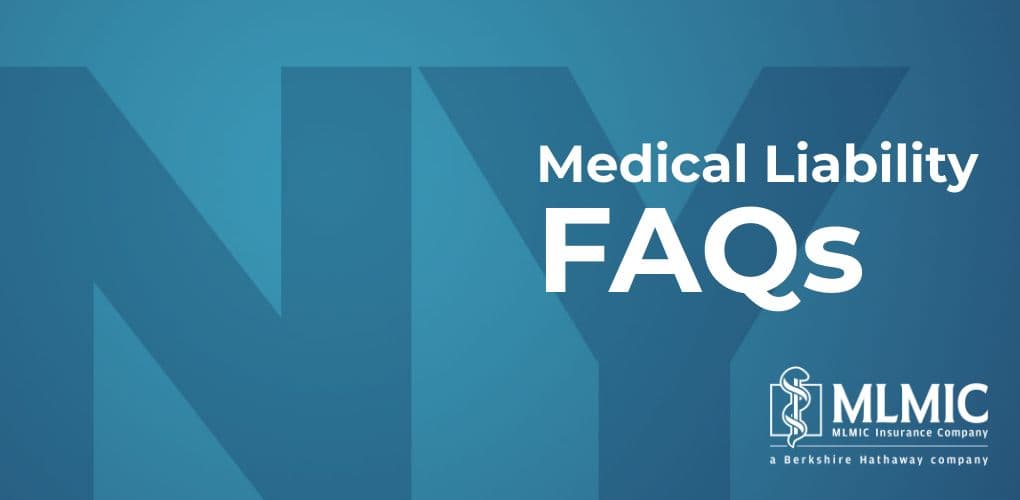< Back to Publications & Resources
Attorneys Respond to Medical Professional Liability FAQs on Documentation in the Medical Record

During the course of a year, the attorneys at Fager Amsler Keller & Schoppmann, LLP, counsel to MLMIC Insurance Company, handle approximately 5,000 questions from policyholders on medical malpractice insurance, risk management and healthcare law. Frequently, the questions asked by healthcare professionals involve requests for legal guidance on documentation in the medical record.
Here, we’ve paired the FAQs on medical professional liability related to informed consent with the attorneys’ responses.
Why is the appearance of the medical record so important in a malpractice dispute?
The medical record is the actual record of treatment provided to the patient, and its appearance is extremely important to your defense. It specifically describes the complete history, evaluation, diagnosis, treatment and care of a patient; and, therefore, it is of maximum value in terms of its accuracy and credibility, especially when used in legal proceedings. Remember, if you didn’t chart it, you didn’t do it. The medical record should be precise, neat, complete and legible, and it should be written so that any other doctor who has a reason to pick up the record knows exactly what has been done for the patient, when it has been done and why.
How do I appropriately document the medical record?
Entries in the medical record must be contemporaneous with treatment and should be written legibly in ink or transcribed. Be sure to use a consistent style for your entries. If your records are ever challenged in court, consistency will impart credibility to your records and will demonstrate your professionalism in maintaining them. You must accurately record both positive and negative findings, and enter the time and date of all entries, signing each one. All entries should follow sequentially; do not leave any spaces between them.
If you make an incorrect entry, cross it out by drawing a single line through it, writing the word error and initialing and dating the correction. Do not, under any circumstances, use white-out or erase an entry. Both techniques suggest you have something to hide. Each correction should be made as it happens with an explanation for the correction to preserve the record’s integrity.
Be sure to record missed appointments and any failure by the patient to accept or follow instructions. This type of information will be helpful in defending a future court action. Always be sure to record your observations in an objective and dispassionate manner. The medical record is not the place to settle disputes, assign blame or write derogatory remarks. Such superfluous entries seem to communicate a lack of professionalism and may raise doubts about the record’s overall credibility.
The attorneys of Fager Amsler Keller & Schoppmann, LLP (FAKS) perform thousands of hours of professional liability services per year. They are uniquely qualified to assess medical-legal issues and provide counsel to minimize liability exposure. MLMIC policyholders can reach 24/7 legal support services by calling (855) FAKS-LAW or emailing hotline@FAKSLAW.com. For more information about these services, offered exclusively to MLMIC policyholders, visit our web page on Legal 24/7.



